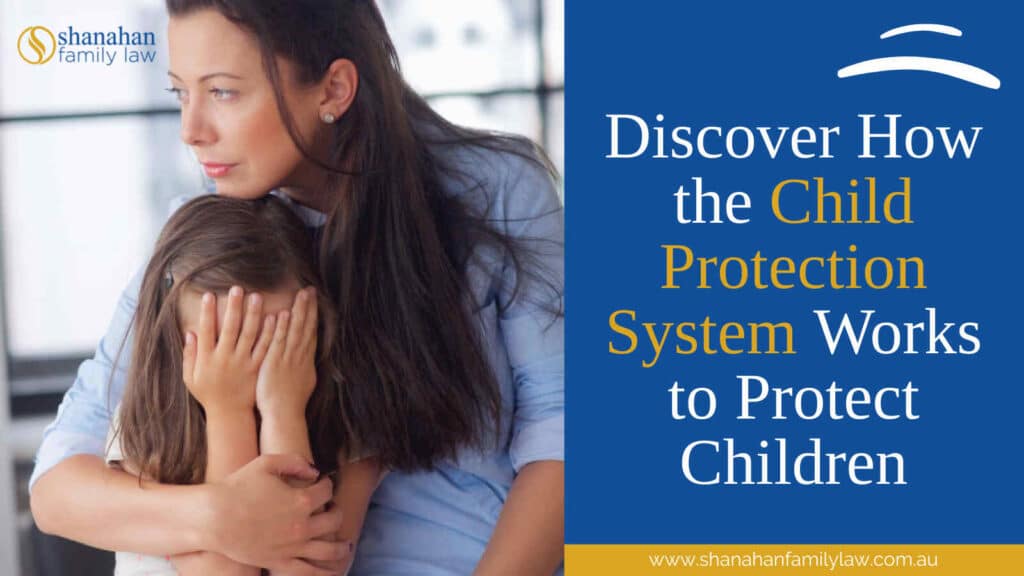
Australia’s child protection system is made up of various policies and services designed to protect children from harm.
In this article, we’ll review the effectiveness of these systems. We’ll identify what issues need to be resolved to improve those systems. With the right approach, we can address child safety concerns quickly and early.
Key takeaways
- Child protection includes policies to provide safety for children experiencing or at risk of abuse.
- The child protection system came into contact with 178,000 children. 45,500 children were found to have suffered maltreatment.
- The protection system involves various components, from an initial report to effecting protective measures.
- The system can be improved through greater recruitment and retention of skilled workers.
- Community education is important for prevention and early intervention.
- Child protection policies have improved through greater focus on early intervention over the years.
What is child protection?
State and territory governments are responsible for implementing statutory child protection. The relevant department in each state and territory oversees child safety. They assist with protecting children experiencing or at risk of child abuse. This can include emotional or sexual abuse, neglect or other form of harm.
Child protection also targets parents who are unable to provide adequate care. Systems seek solutions to keep the children in the home or provide out-of-home care.
State of child protection in 2021-22
The Child Protection Australia report looks at the state of child protection in 2021-22. The information is updated for 2024.
- Approximately 178,000 children had contact with the child protection system. That’s around 1 in 32 children Australia-wide. This is a slight decrease from 179,000 in 2020-21.
- About 45,500 people under 18 were found to be the subject of substantiated maltreatment. A substantiation means that an investigation concluded they were experiencing or at risk of maltreatment. This number equates to around 1 in 124 children.

Child protection system components
Here’s an overview of the child protection system.
Report of child abuse
A report of abuse is made to a child protection department.
Report resolved without investigation
The report may be resolved without the need for an investigation. This may involve advising families on conflict resolution strategies. Families may also be referred to family support services.
Investigation
A child protection department will seek additional information on the child. This will include assessing the degree of harm to a child and their protective needs. The investigation may be substantiated or not.
Substantiation
The investigation finds evidence of maltreatment or a risk of harm to the child. This leads to an intervention by the child protection system.
Not substantiated
The investigation finds no reasonable suspicion of abuse or risk of harm. This relates to a child’s prior, current and future circumstances.
Care and protection orders
Once substantiated, the child protection department will decide on a course of action. This may include court orders affecting parenting arrangements. The department may take some responsibility for overseeing the child’s welfare.

Enhancing systems for better child safety service
The “National Approach for Child Protection Project Report” looks at some of the challenges for Australia’s child protection system.
Developing prevention and early intervention services for at-risk families.
Improve the quality and consistency of monitoring
Establishing a skilled workforce
Skilled workers include staff such as child safety officers. They are essential to protection systems adequately facing challenges and delivering quality care. There are various elements involved in dealing with staffing issues.
Recruiting and inducting workers
Child welfare workers face daily issues that affect their ability to operate effectively. With these difficulties, it’s understandable that jobseekers would find a career in child welfare less appealing. These difficulties need to be dealt with to create a robust workforce. The report found a few areas where improvements could lead to better recruitment outcomes.
- Child protection agencies need to promote a more consistent recruitment message. Potential recruits want to know what an organisation stands for and what their position in the workplace will be.
- Organisations should create realistic job profiles for their staff. Job descriptions should reflect the specific job tasks that are expected. This sounds obvious, but job descriptions are often vague. Applicants should also understand how much time to dedicate to each task. How much time should a child safety officer give to administrative tasks versus working with children and families? This would help clarify the job’s priorities.
- There should be a more consistent onboarding process for new recruits. This is the ideal time to introduce them to the agency’s values and available support programs.
Skill development
Child welfare agencies should support their staff and create a sense of shared risk to reduce anxiety about making mistakes. It’s difficult to pin down precisely what skills are most helpful for families. The focus is to give parents the skills to alter their child’s negative behaviour and foster positive behaviours. There are numerous soft skills involved in this, including:
- Emotional intelligence
- Resilience
- Communication
- Empathy
- Self-awareness
Workers should also be proficient in report writing, managing their time and staying organised.
Education
The child protection workforce is mostly tertiary educated. Courses are provided by universities, registered training providers and vocational schools. They vary in their applicability to desired competencies. More focus on child and family specialisation would help improve the workforce’s skillset. Adult learning is part of developing as a professional. Formal learning should go with real-world experience. This balance leads to the best outcome.
Engagement with workers
Child support agencies often experience high turnover in staff. This is exacerbated by difficulties in recruiting. Agencies could better retain staff through individual and organisational support systems. Supportive peers and a positive team environment help reduce stressors. Organisations can better clarify roles, manage caseloads and provide more on-the-job training.
Cultural sensitivity
Australia is a culturally diverse place. Workforces should reflect this diversity. Aboriginal and Torres Strait Islander children are over-represented in the child protection system. However, there are few Aboriginal staff members in child protection agencies. Organisations can do more to recruit and retain Indigenous staff. Better supervision and protection against discrimination is crucial.

Improving community awareness and education
Everyone is responsible for protecting children. Sometimes, there’s confusion around who has the responsibility to report child abuse. Anyone who suspects a child’s safety is in jeopardy should ensure that child can access support. If a young person is in a life-threatening situation, it’s even more vital to step in. Effective policies empower communities to protect children in immediate danger.
Prevention and early intervention are essential in protecting children. The system works best when governments, agencies and communities work together. Improvements in Australia’s child protection policies centred around increased focus on early intervention. This reform prevents cases from reaching a crisis point.
Prevention occurs as early as pregnancy. Proper antenatal care produces better outcomes for the mother and the child. Early childhood education provides vital support. Attending preschool will better prepare children for school. When children develop healthily, there’s less risk of needing the child protection system.
Organisations such as Families Australia educates families and communities about child development. Parents should be encouraged to ask for help if they need it. Families must be able to access family support services, especially early on. They can work with at-risk families to provide a safe family environment.

Conclusion
Many children have contact with the child protection system. Implementing certain improvements can help make the system more effective. Developing a skilled workforce should be a priority. Prioritising worker support and proper education will help with retention and job satisfaction.
Greater community awareness is also necessary. Prevention and early intervention happen in the community. Community education and access to family support services reduce the chances of significant harm to a child.
If you believe a child is at immediate risk of harm, contact the police on 000.
Contact our child custody lawyers today if you need legal help with a parenting matter.
If you need help with family law matters, contact us for a free discovery call.
Related Articles
- Best Guide On How To Stop A Recovery Order Effectively
- How to Protect Your Child’s Best Interests in Child Custody in Australia
- Parental Plan: Make A Perfect Plan For Your Children’s Care
- Discover The Deep Impact Of Parental Separation On Children’s Growth
- What Is the Difference Between Child Maintenance and Support? (Parents Guide)

